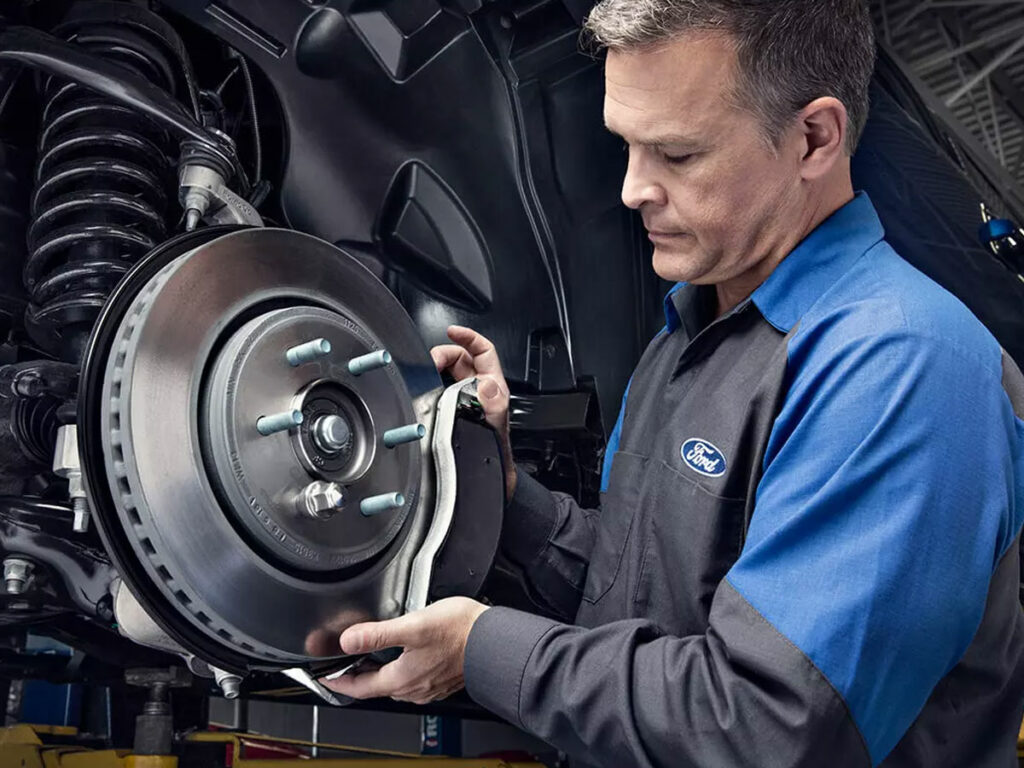If you’ve ever used a bicycle with a hand brake, you’re familiar with the fundamentals of brake pads. Consider this: When you apply the brakes, a cable and a calliper, a device used to apply pressure, are pulled. Along the sides of the wheel, the calliper suspends a pair of brake pads with different compound compositions. The calliper tightens and squeezes the brake pads against the side of the wheel as you apply the brakes, causing friction that slows and stops your bike. The brake pads on your car operate similarly. Well, not quite the same, but pretty close. If in the case that your car brakes are damaged then you must immediately opt for a car brake repair.
How Do Brake Pads Work?
A car, truck disc brake system includes brake pads as one of its key components. Drum brakes are still found on some vintage cars and certain modern trucks, although disc brakes are found on the majority of vehicles on the road. Automotive brakes employ hydraulics in contrast to bicycle brakes, which use cables. In a disc brake system, when you apply pressure to the brake pedal, a hydraulic pump (the master cylinder) is activated to apply pressure through a network of tubes (brake lines) to the callipers that are situated close to your wheels. The braking rotor, which is made of heavy metal, is encircled by a pair of brake pads that are held in place by each calliper. Your wheel’s rotor spins on a wheel hub and is attached to it.
The brake rotor is rotating as your car is driving and the tyres are rolling. When you apply the brakes, the calliper presses the brake pads against the rotating rotor, causing friction and heat. As the brake pads encircle the rotor, your brake system transforms the kinetic energy of your moving vehicle into thermal energy or heat.
Your brake pads are made of a substance that is intended to produce friction when they press against the rotor. Automotive brake pads, like bicycle brake pads, can be made of a variety of materials, each with unique properties. Organic brake pads, for example, are smooth and affordable, semi-metallic brake pads are robust and high-performance, and ceramic brake pads are quiet and long-lasting, but more expensive.
Signs to Replace the Brake Pads
A little quantity of friction material is removed from the brake shoes and/or pads with each application of the brakes of your car. The friction substance will get thinner over time. The friction material will completely wear off if the pads or shoes aren’t replaced, revealing the steel bits that housed the material. It will cause extremely long braking distances and damage to the discs and drums when these steel bits come into contact with them. To determine whether to change brake shoes or pads, watch out for these symptoms:
Screeching or Squealing Voices
If the brake pads on a car have wear indications, the driver might hear a squealing, screeching, or whining sound when using the brakes. A tiny metal attachment on the backing plate for the brake pads that were specifically designed for this reason is what makes this noise. Wear indications function similarly to how chalkboard fingernails operate. It’s essential to bring your automobile into a brake professional for a checkup if you hear it frequently when braking. Keep in mind that not all brake pads have this capability, so you shouldn’t rely just on sound to determine the state of your brakes.
Deep Metallic Grinding That Is Growling
You can hear a low, deep noise that sounds like metal grinding or growling when your brake pads are worn down and the backing plates of your brake pads or shoes are coming into touch with the discs or drums. If you hear this type of noise, get your automobile to a repair shop as soon as you can since the metal-on-metal contact could cause your braking system to suffer further harm.
Coming On Is The Brake Pad Indicator Light
The majority of current cars include brake warning lights that are located on the dashboard. Your brake system warning light is the other, and the first is your Antilock Braking System (ABS) light. The brake light will occasionally illuminate if there is a problem; it is also the light that turns on when your parking brake is applied. However, if your parking brake is not engaged and you are seeing a brake warning light, it is time to have your system inspected by a brake professional to determine the source of your problems.
You may also like
-
The Differences Between Ceramic Coatings and Paint Protection Films
-
Demystifying Insurance Transfer: A Step-by-Step Guide to Navigating the Car Selling Process
-
Early Warning Signs You May Want To Replace Your Brakes
-
Rent a Car Dubai: Your Ultimate Guide to Hassle-Free Rentals
-
A Comprehensive Guide to Buying a Tesla in Canada: 7 Things to Consider

